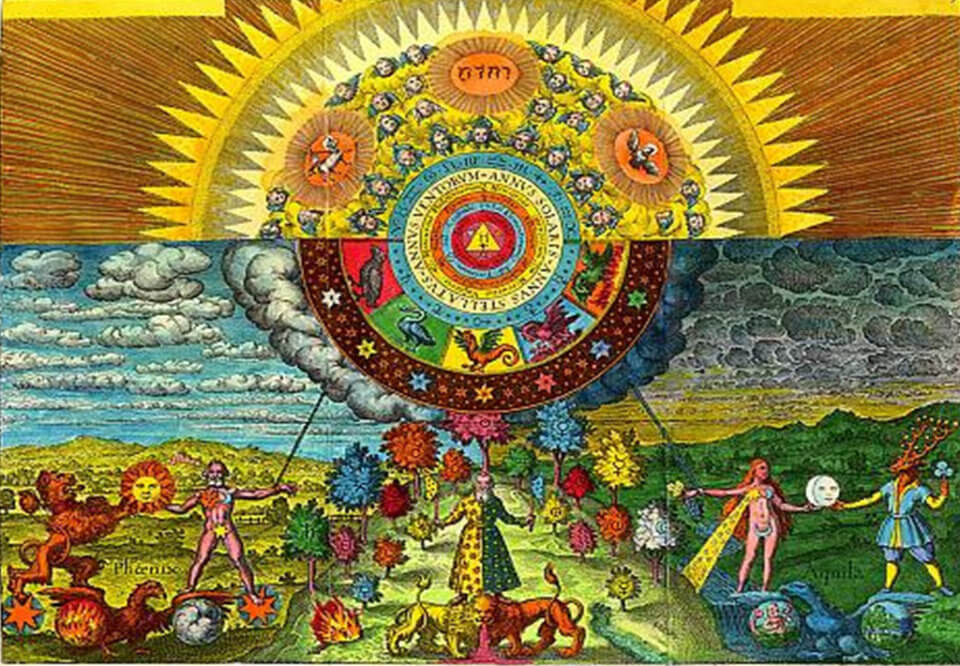
Alchemy primer
At some point in your life, you have probably come across the idea that Alchemy is all about transforming bare metals (e.g., lead) into gold.
Although it is true that this activity occupied the minds of a fair number of alchemists, most alchemy scholars believe this goal was meant metaphorically.
In fact, it would be more accurate to define Alchemy as the art of transformation: how to change one thing into another in order to perfect it.
The thing you are trying to perfect is irrelevant; it can be a metal, a stone, a body or even a mind. The only aspect that matters in alchemy is how one achieves this transformation.
Oftentimes, you will hear that alchemy has to do with transforming the properties within matter (physical alchemy) as much as it does with transforming one’s own mind (spiritual alchemy).
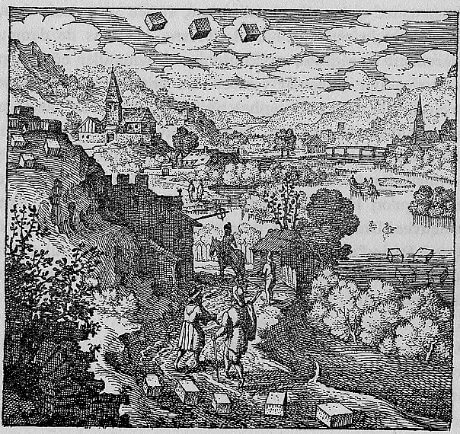
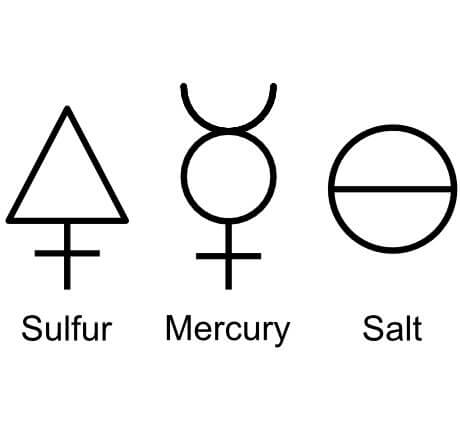
Prima Materia and the Three Essentials
Alchemists believed that all matter originated from a primitive substance called “Prima Materia” or First Matter. Minerals, plants, animals, humans, all arise from interactions among the constituents of this elusive First Matter.
These constituents, which are the same in all forms of matter, are the Three Essences (Mercury, Sulphur and Salt) and the Four Elements (Fire, Water, Air and Earth). In this article, I’ll focus on the Three Essences (the Four Elements will be discussed in another article).
Now, in most cases, the material the alchemist is working with will contain impurities that render it imperfect.
The whole point of alchemy is to extract and purify the First Matter from the material, in order to create a better version of it (this is the Great Work of Alchemy).
With respect to the Three Essentials (Mercury, Sulfur and Salt), a critical mechanism for the success of that transformation is the interaction between Mercury and Sulfur.
Mercury and Sulfur are considered primordial opposing forces that are present in all matter. When you successfully unify the two, Salt is created.
So Salt is present at the beginning of the experiment (albeit in a corrupted form), which is then destroyed and dissolved to release its essences (Sulfur and Mercury), which are purified and recombined into a new, perfected Salt.
These Essentials should not be confused with the everyday elements of mercury, sulfur and salt that you are familiar with.
Instead, in Alchemy, these concepts are used metaphorically to describe certain properties of matter.
For example, Sulfur represents dryness, fiery, masculinity, whereas Mercury is linked to properties such as wetness, watery and femininity.
The whole process goes like this. Say you have metal “A”. Now you dissolve and break away all its physical properties, so that it yields its most fundamental essences (“First Matter”). Next, you modify these essences, so that you eliminate existing impurities, and isolate Mercury and Sulfur. You then mix up the properties of the metal that you consider “pure” (by mixing and fusing Mercury with Sulfur). This process effectively creates an upgraded version of metal “A” that contains the desired properties (i.e., Salt).
This is pretty much what alchemists did in the lab.
Even if you dismiss Alchemy as nothing more than a pseudoscience, alchemists’ experimentation have undoubtedly helped in the discovery of important chemical substances, such as alloys and alcohols.
In this sense, Alchemy has been considered the precursor of a complete scientific discipline – Chemistry.
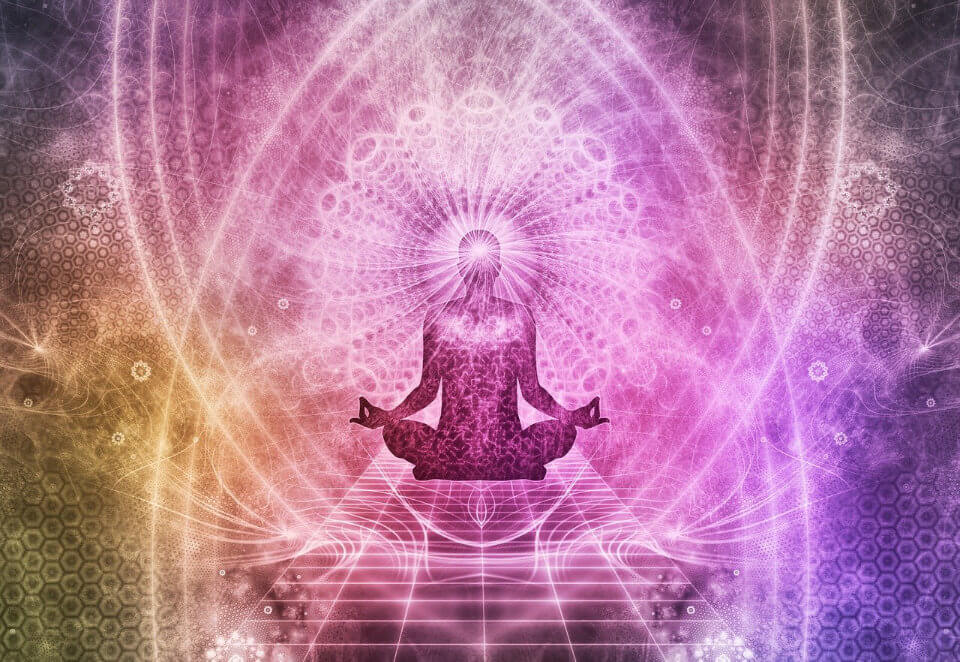
Spiritual Alchemy: the path to personal growth
Now, some alchemists transformed their products using chemical transformations (physical alchemy).
However, some used these alchemical ideas as metaphors for personal transformations as well – the kind of transformations you can apply to the mind (spiritual alchemy).
In the context of a personal transformation, Sulfur, Mercury and Salt are commonly referred to as Soul, Spirit and Body, respectively, but the idea is essentially the same.
Everyone of us contain a degraded version of these three Essentials within ourselves. By purifying them, we can be sure to achieve an optimal personal development.
Psychologically, the Soul represents our emotions, desires and willpower, whereas the Spirit represents our mental faculties, imagination and thought. The Body is our physical Self – the union of Spirit and Soul.
Because Spirit and Soul are opposing forces within us, the Body represents the resolution of these polarities in our psyche (conscious vs. unconscious, masculine vs. feminine, active vs. passive, etc.).
If you successfully create a Body, you will have attained a renewed personality, in which you are able, for example, to combine emotions with logical thinking, to integrate the unconscious with the conscious, to balance the active with the passive and so on.
During my research on the topics of Soul, Spirit and Body and their relationship to Sulfur, Mercury and Salt, it soon became apparent the amount of contradictory information that exists in the field.
Some authors appear to associate Sulfur with Soul and Mercury with Spirit, whereas others link Sulfur with Spirit and Mercury with Soul.
To add to the confusion, even authors that use the same association (e.g., Mercury as Spirit and Sulfur as Soul) tend to give distinct properties to Sulfur and Mercury.
Unfortunately, the more I scrutinized the matter, the more confused I became, so I finally decided to go with the original idea which I believe was formulated by Paracelsus: Sulfur is Soul and Mercury is Spirit.

The final product: the Philosopher’s Stone
You can view the Salt/Body as a perfected version of the material you started with (be it a chemical substance, a body or a mind), after you have cleansed all the impurities within it.
There is a name for this final product: the Philosopher’s Stone.
Unsurprisingly, the Philosopher’s Stone takes different meanings depending on what you are attempting to transform.
A popular quality attributed to this Stone was its power to transmute base metals into gold. Others believed that it constituted a key ingredient for the preparation of an elixir that could heal all diseases and bring about immortality.
Fair enough, but what does all of that have to do with the mathematical problem of squaring the circle I described above?
It appears that alchemists took the mathematical problem of squaring the circle as a metaphor for achieving something that is seemingly unattainable.
In Alchemy, “squaring the circle” refers to the idea of going through the several necessary stages in order to create the Philosopher’s Stone.
Those stages involve breaking down the Prima Materia into the primordial elements (the three Essentials and the four Elements), and subsequent recombining them into a purified element (not unlike what we do with mathematical equations).
A good place where we can see this symbolically is in an illustration from the Atalanta Fugiens (an emblem book created by 16th centurty alchemist Michael Maier).
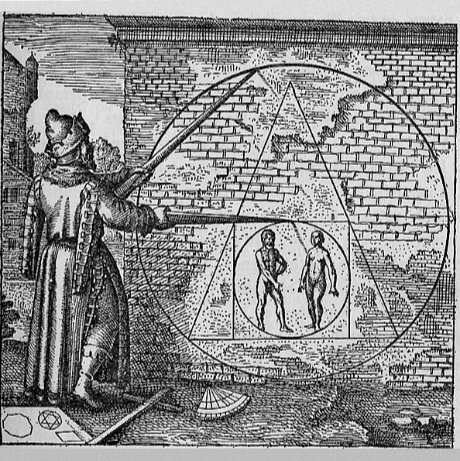
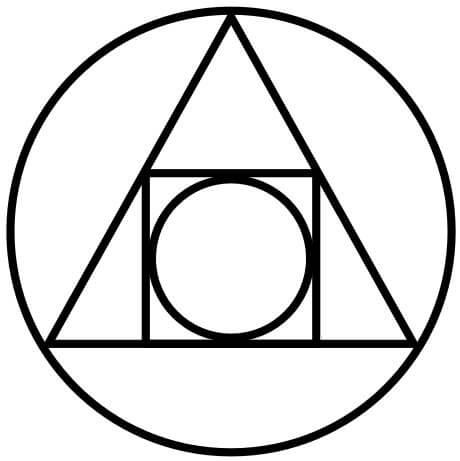
In this illustration, a man uses dividers to draw a circle around an inner circle. The inner circle is enclosed within a square, and you see two figures inside the square: a man and a woman.
Interpretation of this drawing goes that the man and woman represent the two halves of our human nature. The inner circle that encircles them represents the union of masculine (Soul) and feminine (Spirit) energies.
The square and the triangle represent the four Elements (Earth, Fire, Air and Water) and the three Essentials (Soul, Spirit and Body) respectively, which are finally united into the Philosopher’s Stone (the outer circle).
So the alchemical “squaring the circle” describes this whole process from the Prima Materia up to the birth of the Philosopher’s Stone.
The Great Work of Alchemy (Magnus Opum)
The quest to “create” the Philosopher’s Stone consists of seven steps (the Great Work of Alchemy or Magnus Opum).
These steps were not only described chemically (how physical substances were refined and purified), but also psychologically.
In this article, I will mostly focus on the psychological description, since it is the most relevant for the interpretation of Schism.
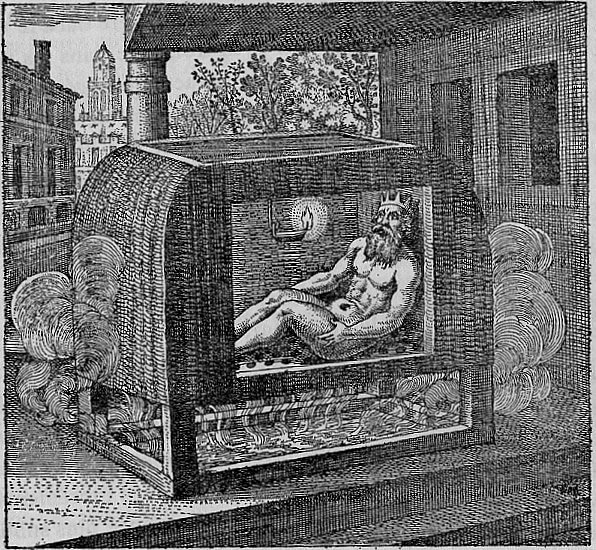
Calcination
Chemically, calcination is the process of heating solids at high temperatures in order to bring about thermal decomposition.
In other words, if you calcinate a substance, it will be disintegrated into simpler, more basic constituents (e.g., calcinating limestone will allow you to split off lime from carbon dioxide).
Psychologically, as we grow up, our self-esteem might decline. We might become dissatisfied with our careers and brood over personal embarrassments and failed relationships. We tend to lose contact with our true self (the spiritual self), as we begin to build a false identity in response to pressures from our family and society at large. In alchemical terms, we build impurities – superfluous behaviour that restricts our personal growth.
In the process of Calcination, we begin to realise that superfluous matters present in our lives are not important. We start to let go of previous material and emotional attachments that are in the way of personal growth.
So, the process of Calcination destroys our false identity, so that we can find out what our true purpose in life really is.
Needless to say that this is a tough and shocking period in our lives, because we will feel as if we were being thrown into an abyss of darkness and burned to ashes.
We might get depressed, angry, feel lost and don’t really know who we are anymore.
Therefore, many people avoid this process, as maintaining the status quo is the most comfortable and easier thing to do.
Example: Let’s say that you are trying really hard to move up in your job. Perhaps because you have always felt you needed to achieve a certain status within the field you are working in. You might well be successful, but perhaps, along the way, you might neglect other sides of yourself, for example, your emotional life.
It might also turn out that that after you reach the much-wanted position, the job doesn’t completely fullfil you. Why is that? Maybe that aim had been fueled by your parents’ overly high expectations that always wanted you to be that particular person. So, you realise that you cannot go on like this and need to let go of this life. It will be hard to let go of a life and identity that you have been building for years. Ultimately, however, you understand that this is the only true way to move forward.

Dissolution
Dissolution is the next step of alchemical transformation.
Chemically, this phase is characterised by taking the ashes from Calcination and dissolve them in water.
Pychologically, this means that once we have identified and broken down the corrupted structures of our personality, we begin to identify less with our false ego.
Here our conscious mind relaxes and allows unconscious contents to surface.
Unconscious material might include, for example, projections. Simply put, a projection is the displacement of negative qualities or feelings onto other people.
Example: We might feel very inimical towards a co-worker who is doing very well and was recently promoted. You think he does not deserve that position, because you feel he is just sucking up to the boss. But perhaps the reason you get so worked up with him is because you are a suck-up yourself. Since you see being a suck-up as a negative trait, you unconsciously project it onto your co-worker. People often project their own negative feelings or thoughts to others so that they avoid confronting themselves with these discomforting traits.
The process of Dissolution allows us to identify these kinds of unconscious behaviour.
Once we realise our unconscious projections (as well as other faulty traits), we become aware of how our behaviour might be influencing our relationship with ourselves and others.
If we manage to bring this unconscious material to light, then we are on a good way to integrate the unconscious into our personality.
In this stage we also attempt to resolve painful experiences that had been repressed in the past.
We might find innovative ways to deal with the emotions triggered by these grieving events and redirect this energy towards creative endeavors.
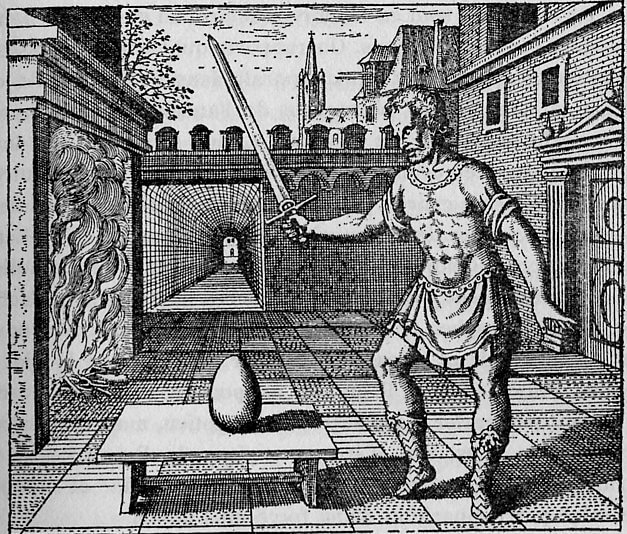
Separation
Chemically, this refers to the isolation of the components of Dissolution, resulting in the separation of pure from impure material.
Psychologically, after Dissolution, you are able to observe which aspects of yourself are authentic and worth preserving (purities) as well as unconscious elements that are in the way of personal growth (impurities).
The goal of separation is to retain everything that is genuine by removing it from contaminating influences (i.e., separate the good stuff from the bad stuff).
Thus, we sift through all the unearthed unconscious material from Dissolution and decide what is worth preserving.
During this stage, we don’t resort anymore to ignoring dealing with particular difficult feelings because it’s easier thing to do. No! Even if it’s uncomfortable to deal with, we still do and we acknowledge that. This allows us to assess how we truly feel.
Example: Let’s say you realise that you really are a suck-up and this allowed you to move up in your career. Upon reflection, you know this is not fair, and certainly not the way to earn respect. So you acknowledge being a suck-up is a bad quality that you should exclude from your personality. In contrast, you might find that you repressed feelings of compassion, because your job required you to pass off as a tough guy. However, being a compassionate person may actually make you a better person (as well as more likable) so you would try to integrate that into your personality. In the Separation process, you actively separate the wheat from the chaff, and notice what unconscious elements are worth preserving (like being compassionate) and the ones that need purging (like being a suck-up).

Conjunction
Chemically, conjunction refers to the recombination of those authentic elements saved during Separation.
So, after Separation you have achieved a certain level of purification, which leaves you with those qualities that you deem authentic. We must now recombine these elements into a whole new personality – this is the operation of Conjunction.
It is a critical, and arguably, the most important stage in the Alchemical journey. It is so important that alchemists have a special name for it – the “Sacred Marriage”.
The Sacred Marriage of Conjunction is the marriage of the masculine and feminine sides within yourself.
As I described earlier, the Soul governs the emotions whereas the Spirit represents mental faculties and thought (note that there is not an agreement here, see above).
If you merge these two, you will not only become aware of your emotions, but you have learned to integrate them in the process of decision making.
In other words, you will make decisions in life that are more aligned with with you true feelings and emotions.
Needless to say, Spirit and Soul need a certain level of purification to actually unite. If contaminants or impurities are present, a new personality (or Body in alchemical jargon) will not be produced. There are similarities with the notion of integrating your Anima/Animus in Jungian psychology.
Example: So, after much contemplation, you successfully identified the most authentic characteristics worth preserving. What remains to be done is to unite them. Let’s say you have decided not to be a suck-up anymore and also realised that you need to show more compassion towards others. So you decide to quit your job, as your current work environment is not conducive to pursuing your goals. You look for a new project that allows you to put your newly developed feelings of compassion to work. Perhaps a job which allows you to improve the quality of peoples’ lives. You say what is truly in your mind even if it does not meet your bosses’ expectations. What is important is the well-being of other people and not ingratiating yourself with your boss for a quick ascension in the career ladder. Sometimes you get into innocuous disagreements with your boss, and the paycheck is certainly lower than in your previous job. However, this new You feels reinvigorating!
There are at least 3 further stages in Alchemy that are required to create the finished Philosopher’s stone, namely fermentation, distillation and coagulation.
However, I’ll stop at the Sacred Marriage of the Conjunction process as this is the critical point where the Philosopher’s Stone is born (at least a proto-version of it).
Separation and Conjunction (Sacred Marriage) are the two processes that combined comprise the White Phase in Alchemy. I see Schism as an allegory of this stage.

Excellent research and concise explanations, your analysis is very accurate given I was able to discern the allegories and symbolism to the same conclusions. There are many facets to the genius of this song and music video that were clearly designed to be played together as inseparable as the constituents of successful synthesis alchemy describes. The fact Maynard’s history reads like a tailored spook (he is one), he declares himself for the legion by signaling the hidden hand, plays from behind a curtain during some shows, the man does a service visualizing these hermetic principles and deep esoteric concepts though at what cost to divulge so clearly I can’t and would rather not imagine.
Hi Ellis! Great comment, thanks for sharing! Indeed, I’ve always felt that the album Lateralus is in itself a description of an entire alchemical journey. However, I also believe that the concepts present in Tool’s songs (including Schism) probably extend beyond Hermeticism and other esoteric teachings. I once watched an interview with Maynard in which he explained quite articulately the nuances of – if my memory doesn’t fail me – Saturn’s orbit, and how it related to “The Grudge”. Tool’s exceptional ability to combine these different pieces of knowledge, and create such harmonious music is truly unique in my view. Entire PhDs could be written about this 🙂